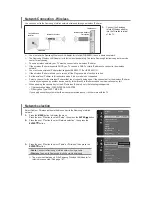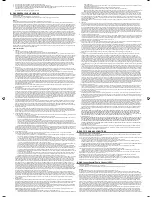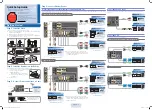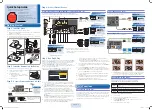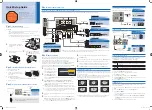
Appendix
18
CP64xx
Appendix
Technical data
Dimensions
Dimensions (W x H x D):
329 x 303 x 79 mm (without Control Panel)
Weight:
6.0 kg (basic version, without Control Panel)
Do not use the PC in areas
of explosive hazard
The Industrial PC may not be used in areas of explosive hazard.
The following conditions must be observed during operation:
Environmental conditions
Ambient temperature:
0 to 55°C
Atmospheric humidity:
Maximum 95%, non-condensing
Shock resistance
Sinusoidal vibration:
(EN 60068-2-6)
10 to 58 Hz:
0.035 mm
58 to 500 Hz: 0.5 G (~ 5 m/ s
2
)
During reading of CD-ROM:
10 to 58 Hz:
0.019 mm
58 to 500 Hz: 0.25 G (~ 2.5 m/ s
2
)
Impact:
(EN 60068-2-27/ -29)
5 G (~ 50 m/ s²), duration: 30 ms
During reading of CD-ROM:
5 G (~ 50 m/ s²), duration: 11 ms
Protection class
Protection class:
IP20
Power supply 100-240 V
AC
power supply unit
Supply voltage:
100-240 V 50-60 Hz
Power consumption:
100 W for the basic version
Power supply 24 V
DC
power
supply unit (optional)
Supply voltage:
24 V
DC
Power consumption:
100 W for the basic version
Electromagnetic
Compatibility (EMC)
Interference resistance:
according to EN 61000-6-2
Emitted resistance:
according to EN 61000-6-4
Transport and storage
The same values for atmospheric humidity and shock resistance are to be
observed during transport and storage as in operation. The shock
resistance during transport can be improved by means of suitably packing
the Industrial PC. The ambient temperature during storage and transport
must be between -20°C and +65°C.
i
Note
Pixel errors in the TFT display are production-caused and represent
no complaint-reason!
Approvals
FCC: Federal Communications Commission
Radio Frequency Interference Statement
FCC Approval for USA
This equipment has been tested and found to comply with the limits for a
Class A digital device, pursuant to Part 15 of the FCC Rules. These limits
are designed to provide reasonable protection against harmful interference
when the equipment is operated in a commercial environment. This
equipment generates, uses, and can radiate radio frequency energy and, if
not installed and used in accordance with the instruction manual, may
cause harmful interference to radio communications. Operation of this
equipment in a residential area is likely to cause harmful interference in
which case the user will be required to correct the interference at his own
expense.
FCC: Canadian Notice
FCC Approval for Canada
This equipment does not exceed the Class A limits for radiated emissions
as described in the Radio Interference Regulations of the Canadian
Department of Communications.
Summary of Contents for CP64 Series
Page 2: ......
















